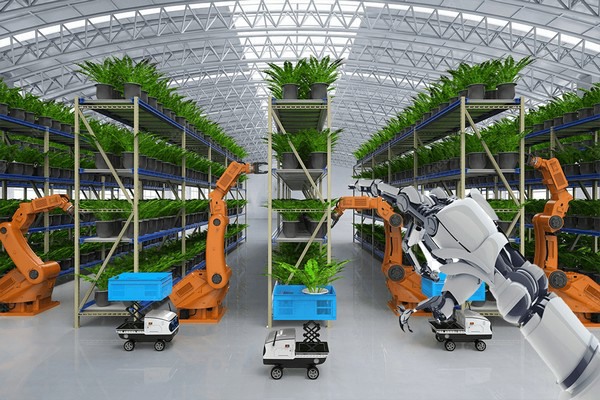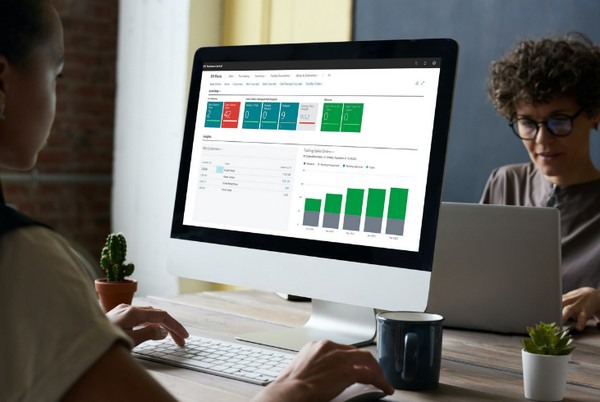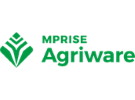Horticulture is increasingly data-driven, and it is ever-more using innovative digital technologies, such as cloud computing, the Internet of Things, machine learning, and robotics, writes Cor Verdouw with Mprise Agriware.
At the Greentech in Amsterdam, this was very evident. For example, all but one of the nominated innovations were digital data solutions. Berry, a harvesting robot for strawberries, won the concept award. Other nominees were a sensor network of digital insect traps (Trap-Eye), an autonomous cultivation system for indoor farming (Gronos), and a software tool to calculate CO2 foodprints (HortiFoodPrint calculator). Many digital solutions were also being promoted at the booths. A small selection: greenhouse drones (PATS, Corvus), tomato harvesting robots (the winner of the Robot Challenge GRoW, en EGA Matic), sensors for measuring plant stress (Vivent) and leaf temperature (Sigrow), sensing systems for digital phenotyping (Hiphen), yield predictions based on computer vision (YieldComputer, ecoation), autonomous growing systems (Blue Radix, ioCrops, Koidra), and much more.

Remote growing with Digital Twins
These technological developments are radically changing horticultural production. Instead of experienced growers personally monitoring the condition of the crop ('management by walking around'), cultivation decisions can be based on real-time data and intelligent algorithms.
Growers can monitor and control operations remotely, enabled by so-called Digital Twins. Such a virtual twin is a digital copy of, for example, a greenhouse that is linked to the real greenhouse and continuously updated.
A Digital Twin can be enriched with smart algorithms, and machines or robots can be connected. Thus, growers receive alerts via the Digital Twin if there are (expected) problems, and they can check the situation in the greenhouse from behind their desk or smartphone by digitally viewing the plants or machines involved. They can also use the Digital Twin to digitally simulate the effects of interventions in advance, then take the best action remotely and afterwards check whether the problem has actually been solved.
What are Digital Twins?
The term Digital Twin was introduced by NASA in 2012 for 'mirroring' the exact state of a real space vehicle during a mission. So, in essence, a Digital Twin is a virtual, digital representation of a physical object linked to it in (near) real-time. This representation can be basic, for example, an overview of a greenhouse with live data. It can also be a realistic environment, where, for example, you can virtually walk through the greenhouse and inspect 3D plants. But all Digital Twins have these five characteristics::
- Timeliness: a Digital Twin represents its physical twin in (near) real-time, changes in the physical object are (immediately) identified and synchronized, and vice versa;
- Fidelity: the reliability and security of a Digital Twin must be unquestionable, allowing to blindly trust Digital Twins for decision making;
- Integration: a Digital Twin integrates different types of data from the physical object and ensures its unambiguous representation;
Intelligence: Digital Twins do not only reflect object data but also use algorithms for describing, analyzing, and predicting the behavior of the physical counterpart; - Complexity: Digital Twins can mirror various physical objects at different levels of granularity, ranging in horticulture from the genetics of individual plants to a company or value chain.

Digital Twins in horticulture currently focus on cultivation
Although the term Digital Twin seems to be a new buzzword, I consider it to be a continued development of smart, data-driven horticulture. In practice, Digital Twins already exist, although they are often not yet called such. A literature review by one of my students at Wageningen University shows that most are still relatively 'basic' Digital Twins that focus on remote monitoring and control. However, more 'advanced' Digital Twins, such as for (near) real-time predictions, are emerging.
Another conclusion of the study is that Digital Twins in horticulture now mainly focus on cultivation management in the greenhouse with respect to climate, energy, and lighting. There is still little research on Digital Twins for individual plants, although that level of detail is important for breeding, for instance. Completely absent in the review were Digital Twins for the business processes and the performance of horticultural companies as a whole.
Integrated Digital Twins for business and cultivation
However, Digital Twins are not an end in themselves, but a means to improve business results. For the future, I, therefore, envision a layered Digital Twin that combines the company, cultivation, and even individual plants. The point of departure would be a management cockpit with the actual and expected business performance, such as lead times, product quality, wastage, cost prices, and delivery reliability.
These indicators combine various data from different sources, including ERP systems, automation in the greenhouse or field, and external data. Smart algorithms will allow the simulation of expected performance, e.g., by demand forecasts based on artificial intelligence. One can drill down into the details for specific business processes, locations, varieties, production lots, etc.
For the cultivation process, you then zoom into, for instance, the Digital Twin of a greenhouse, of which the expected yield is lower than planned. In this digital greenhouse, the grower checks the climate and other cultivation conditions for the lots concerned. They can also view the plant's physiological characteristics (e.g., stress) and even the genetic profile in the Digital Twin of a reference plant in these lots.
The various Digital Twins support this analysis with smart decision support tools. These tools advise a grower on the measures to be taken, for example, the use of 8,000 extra predatory mites against spider mites in compartments A and B of greenhouse Z. After approval by the grower, the Digital Twin instructs a drone to release the exact number of predatory mites at the right spots.
By the way, the Greenhouse Digital Twin will autonomously manage most of the cultivation operations based on predetermined norms. This allows growers to focus on exceptions and the business side of cultivation.
No 'layered' Digital Twins without integrated business software
The virtualization of horticulture with Digital Twins now seems to be gaining momentum and will have a major impact on productivity, efficiency, quality, and sustainability. In my opinion, the successful Autonomous Greenhouse Challenge is very exemplary. In this event, the participating teams control the cultivation in their compartment fully remotely based on sensor data and smart algorithms.
The net profit of the winner this year (lettuce) was almost 30% higher than the reference group of experienced growers. In fact, last year (cherry tomatoes), all teams performed significantly better, and the winner's net profit was more than twice as high!
Digital Twins can also capture the knowledge of experienced horticultural experts, thus contributing to addressing the scarcity of green personnel. Moreover, Digital Twins are a promising tool for setting up, scaling up, and managing international production sites.
I expect Digital Twins to become increasingly embedded in business management in the near future. As a result, they will more often consist of multiple interconnected levels from company to plant. However, this is only possible if the underlying data are sound.
For a 'layered' Digital Twin from farm to plant, this not only means cultivation and plant data but also business data and external data. A well-integrated business management system, which seamlessly cooperates with the automation in the greenhouse and in the field, is, therefore, a crucial precondition.

 Mprise Agriware
Mprise Agriware